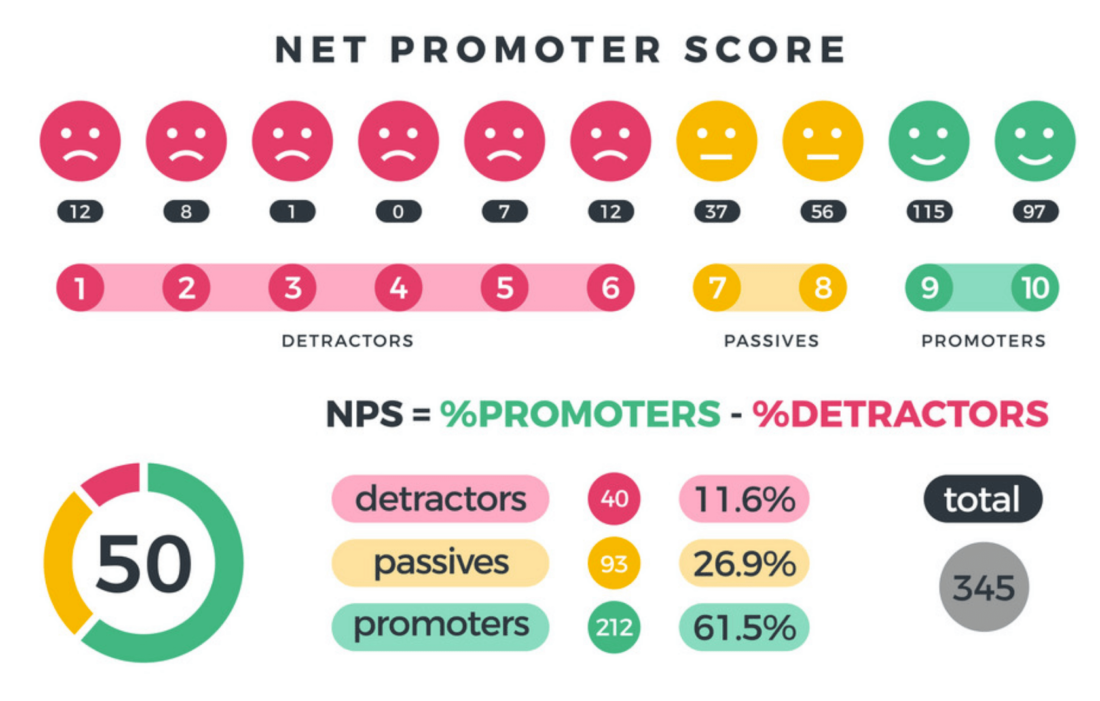The roles in agile teams have special characteristics that are related to each other to generate the necessary interactions for the generation of value in the organizational units that operate with agile teams.
One of the virtues that is so widely promoted is that of being “Servant Leaders” to find the balance between autonomy, mastery and optimal performance. These roles provide a service with valuable actions, making efforts to satisfy a need or to fulfill a request from the teams, these services need to be provided on time, with the highest quality and focused on the organizational needs to meet the needs of the teams. customers.
This is where it is important to have an indicator that helps us identify the degree of satisfaction of all these roles, in order to identify opportunities for improvement and seek to improve interactions between people. Although in continuous improvement sessions such as retrospectives you can talk about these issues, I have seen that sometimes not all teams have the same level of transparency to be able to deal with these difficult issues, anonymous surveys encourage putting on the table the problems that are perceived in the environment, apart it becomes more complex if we want to focus the work in the whole organization working transversally with the roles without having an approved criterion. Given the previous case, I have seen that the NPS (Net Promote Score) is a good indicator that will help us collect information that, when analyzed, will generate action plans.
Since we tend to see ourselves primarily in the light of our intentions, which are invisible to others, while we see others mainly in the light of their actions, which are all that’s visible to us
J. G. BENNETT
What is the NPS?
The NPS has become a fundamental business metric that is based on a single question (on a scale of 0 to 10, how likely is it that our company will recommend?), It is an easy way to get a quick read on the opinion of consumers and has been widely accepted in the market. Many leading companies have incorporated it into their operations. In our case, we adjust the question by How likely is it that you recommend the accompaniment of your (Role in Agile team)? Additionally, you can add questions about why, or some feedback, this will help to argue the results and directly find opportunities for improvement.
How is it calculated?
The NPS Classification System groups people into three categories:
Promoters: those who give scores of 9 or 10, are loyal people and are more than satisfied with the experience, trust and mobilize.
Neutral: those who give scores of 7 or 8, are satisfied people, not enthusiastic and behave depending on trends.
Detractors: those who give scores between 0 to 6, are dissatisfied people who may present some resistance.
To calculate the NPS, it is the subtraction of the percentage of Promoter customers minus the percentage of Detractors, giving a result of a number from -100 to 100.
Example :
The following were the results of 10 people
5, 10, 8, 7, 8, 7, 9, 10, 7 y 10
| Category | Values | Percentage |
| Promoters | 10, 10, 10, 9 | 40% |
| Neutral | 8, 7, 8, 7, 7 | 50% |
| Detractors | 5 | 10% |
NPS = Percentage of Promoter clients – Percentage of Detractor clients
NPS= 40 – 10 = 30
How often do I calculate it?
Finding the right cadence is a matter of experimentation, it will depend a lot on the size of the organization, ability to process and actuate the information, it is recommended to fit the same cadence in which some dynamic organizations are carried out, for example, for Sprint for small cohesive teams, each quarter for multi-team groups. The important thing is to have a time interval that allows to visualize changes in behavior and time to act.
Recommendations
With the information collected, several strategies can be proposed to address continuous improvement, one of them at the individual level, for example a facilitator of agile teams who measures their NPS with their teams, analyzes and creates actionable to improve the indicator at the individual level.
Another alternative is by business unit that measures all leaders looking for transversal actions and critical cases, for example, a unit of several agile teams takes the indicator of all agile facilitators, product owners, agile coaches and technical leaders, in order to to see the perception of the accompaniment, to look for transversal actions that impact everyone and to individualize specific cases. Finally, we can see it at the organizational level, where it is taken with all agile teams, the most critical roles are measured and work fronts are created by role to seek to improve each of them, having a cross look at each level.
The indicator has something relative, since, being perception, it is possible that you are lucky or not at the moment where the survey was run, so the number will be defined by the state of mind at that moment, by What is important is not to focus on the number but to always look at the opportunities for improvement that can be applied to change the perception of the accompaniment, so it is vital to add an additional question in order to collect valuable information. Finally, for the presentation of the results, it is good that at the individual level it is carried out in a one-on-one session, where the results are discussed and improvement actions are committed.
Sources:
- Where Net Promoter Score Goes Wrong: https://hbr.org/2019/10/where-net-promoter-score-goes-wrong
- Cómo medir y mejorar tu NPS: https://makingexperience.com/blog/como-medir-y-mejorar-tu-nps/

